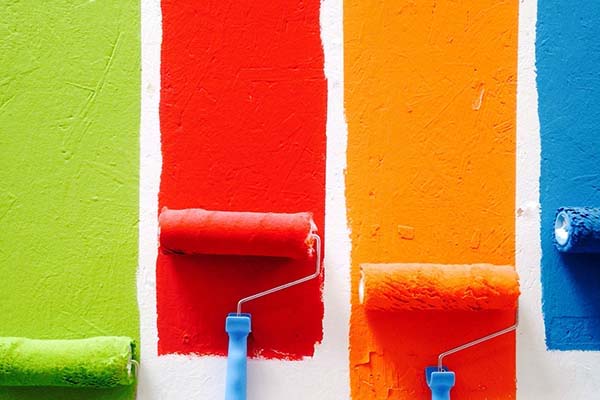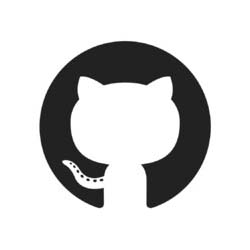In this article, we look into the benefits of completing a certification program for User Experience (UX) or Human-Computer Interaction (HCI). You will learn about the top 5 UX certification programs that you should consider and the comparisons.
Over the past two decades, more companies, especially those in the technology sector, have been placing extra emphasis on UX to increase user satisfaction and user retention. This has led to the creation of more new roles such as UX researchers, UX designers, UX strategists, UX writers, UI designers, interaction designers, etc. in the job market.
Is a UX Certification worth it? Understand the benefits of UX Certification
A UX Certification is most suitable for:
- UX novice
- Mid-career switch
- Internship seeker
- Software developer
A UX Certification is an introduction to the discipline of user experience, primarily on the process, principle, and methodology of user-centered design (UCD), user experience design (UX design), and user experience research (UX research).
If you are new to UX or if you are seeking an internship or mid-career switch into UX, you will stand to benefit immensely from a UX Certification program. With the program, you will be guided through the foundations of UX. While you will probably not be qualified as a UX designer or UX researcher yet, you will get a rough understanding of what they do and their job scopes.
Software developers are always recommended to complete a UX certification program as it will help you to work well with fellow designers or researchers in the team and train you to focus more on the users.
What a UX Certification cannot do
A UX certification will help you in your job search for UX jobs but it will not immediately land you a job in UX.
You can follow this guide on how to kickstart a career in UX. It is recommended that you learn at least one relevant software and build your own portfolio.
Top 5 UX Certification Programs
While there are formal degrees and postgraduate courses associated with HCI and UX design, there are also short courses offered by universities, UX companies, trade associations, as well as large technology conglomerates. We have shortlisted the top 5 UX certification programs in the market that are widely recognized in the industry:
1. Google UX Design Certificate
- Mode: Online, E-learning
- Duration: Self paced, estimated to be less than 6 months on part-time basis
- Cost: 7-day free trial, USD 39 per month
- Difficulty Level: Beginner
Google UX Design Certificate program is conducted through Coursera – an e-learning platform that allows you to complete the course at your own pace. The fee for participating in the program depends on how long you complete it on Coursera. Coursera offers a 7-day free trial and if you are able to complete it within the 7 days, you don’t need to pay a single cent. Otherwise, the platform charges USD 39 per month for using its services.
Google does not charge for the course so there is no other fee other than having to pay Coursera. Also, Google has made financial assistance available and one could apply for sponsorship if there is a need. The course covers the following topics:
- Foundations of User Experience (UX) Design
- Start the UX Design Process: Empathize, Define, and Ideate
- Build Wireframes and Low-Fidelity Prototypes
- Conduct UX Research and Test Early Concepts
- Create High-Fidelity Designs and Prototypes in Figma
- Responsive Web Design in Adobe XD
- Design for Social Good and Prepare for Jobs
This is a beginner course and is suitable for a mid-career switcher or fresh graduate who is exploring a UX career. To know more, click here for course details.
2. Nielsen Norman UX Certification
- Mode: Online, Live 2-way video conferencing / In-person
- Duration: 30 course hours for the UX Certificate / 90 course hours for the UX Master Certificate
- Cost: USD 3,200 to 6,000 tuition fee + USD 400 exam fee for UX Certificate (5 courses) / USD 9,600 to 18,000 tuition fee + USD 1200 exam fee for UX Master Certificate (15 courses)
- Difficulty Level: Intermediate (UX Certificate) / Advanced (UX Master Certificate)
Nielsen Norman Group is a UX consulting firm founded by Jakob Nielsen and Don Norman in 1998. They are the pioneers in the UX industry, known by all the UX practitioners. The term “User Experience” was coined by Don Norman in 1993 while working as a VP of Research at Apple Computer, Inc.
Other than offering consulting services, the group also provides training services to aspiring and existing UX practitioners. Trainings at Nielsen Norman Group is conducted in modules called UX Conferences – there are more than 50 modules spanning topics in UX research, design and management. Each module covers a specific topic on UX and takes about 6 hours to complete. Taking an examination for a module is voluntary and with additional costs. If your objective for taking a module is for personal interest and knowledge, there is no need to proceed with the exam.
However, if you wish to be qualified for the UX Certification, you will need to complete 5 UX Conferences and pass 5 respective exams. Upon completing the 5 modules, you can also consider taking another 10 UX Conferences and passing 10 respective exams to quality for the UX Master Certification.
In summary, Nielsen Norman UX Certification is somewhat demanding and more suited for those who have some experience with UX. Its certification is widely recognized and useful for experienced professionals to get themselves certified. To learn more about their certification programs, click here.
3. Human Factors International Certified Usability Analyst (CUA)
- Mode: Online, Live 2-way video conferencing / In-person
- Duration: 10 course days, around 1 calendar month
- Cost: USD 5,860 (4 courses + exam)
- Difficulty Level: Beginner
Human Factors International (HFI) is a Customer Experience / User Experience consulting company established since 1981. Other than providing CX and UX consultancy services, it offers 3 certifications related to UX:
- Certified Usability Analyst (CUA)
- Certified User Experience Analyst (CXA)
- Certified Digital Persuasion Analyst (CDPA)
It’s CUA certification program is the most popular among the three, and has certified more than 8,000 professionals to-date. It is a foundational course with just 4 modules, but the course will give newbies a quick head start into UX. The curriculum includes the following:
- User Experience Foundations – 2 Days
A solid working understanding of the key foundational research-based insights essential to the UX field is imperative for design. This course teaches you to apply the key understandings about human vision, intellect, memory, and motor functions directly to design decisions. - User-centered Analysis and Conceptual Design – 3 Days
The user-centered analysis is the basis for designing software interfaces that are intuitive and easy to use. In this course, you’ll learn the methods of analyzing user requirements. - The Science and Art of Effective Web and Application Design – 3 Days
This course draws on the most up-to-date usability research and on the principles of successful visual design. You will learn how to create winning Web sites that balance user performance and visual appeal. - Practical Usability Testing – 2 Days
A critical component of creating a user-centered application is progressive testing. This course provides practical techniques to help you move the design into accordance with the user’s needs, limitations, mental models, and cognitive styles.
This certification is useful for fresh graduates and mid-career switchers seeking entry or junior UX positions. To know more about the certification, click here.
4. General Assembly UX Design Immersive
- Mode: Online, Live 2-way video conferencing
- Duration: Full-time for around 3 calendar months
- Cost: USD 14,950
- Difficulty Level: Intermediate
General Assembly is a training provider that was established in 2011. In 2018, the company was acquired by Adecco Group – a global HR solutions company. It is headquartered in New York, United States and have a physical presence in Canada, France, Singapore, United Kingdom, and Australia. The company has trained more than 70,000 people to date.
While many of its courses are delivered online, General Assembly also offers in-person courses in cities where they have a physical presence. The company offers both full-time and part-time courses related to the digital realm, ranging from digital marketing, software engineering, UX design, visual design, and data analytics. Their courses are popular with students, especially their “GA Immersive” programs as they offer a Catalyst Income Share Agreement (ISA) whereby students need not pay for tuition until they get a job paying $40,000 or more.
General Assembly UX Design Immersive is useful for for mid-career switchers and fresh graduates who have limited UX knowledge. Its curriculum includes the following:`
- Pre-Work: UX Fundamentals
- Unit 1: UX Foundations
- Unit 2: UI Foundations
- Unit 3: Design Iteration & Development
- Unit 4: Working With a Product Team
- Unit 5: UX in the Real World
- Unit 6: UX Career Planning
To know more about the course and certification, click here.
(Note: The tuition fee and eligibility of ISA may vary across markets. Our information above is based on its offering for the United States only)
5. MIT Human-Computer Interaction for User Experience Design
- Mode: Online, E-learning
- Duration: Self-paced, 8-10 hours per week for 6 weeks
- Cost: USD 2,500
- Difficulty Level: Beginner
MIT Human-Computer Interaction for User Experience Design is an online short course offered by the Massachusetts Institute of Technology’s (MIT’s) Computer Science and Artificial Intelligence Laboratory (CSAIL).
This short course is delivered remotely online, and as such, it allows anyone over the world to enroll in this course. In addition, the cost is also affordable.
The curriculum of the program are as follows:
- Module 1 The Essence of Interaction
An introduction to HCI and UI and the criteria, multiple levels, and conceptual aspects to consider in interaction design. - Module 2 Natural Interaction
An overview of natural user interfaces and the design principles guiding them. - Module 3 Collaborative Computer Interaction
Learn about the democratization of computer interaction and some of the tools that can be used for this purpose. - Module 4 Intelligent User Interfaces and Prototyping
Discover how high-performance applications can improve usability and how prototyping can be applied. - Module 5 Multimedia, Speech, and Vision in Computer Interaction
Learn about vision capabilities, gaze-following, intuitive media authoring, and language learning in machines and computer - Module 6 Future Directions of UI
Explore the future and look at the directions of user interaction; learn about human-robot interaction, virtual reality, and more.
We find that the curriculum of this course is more theoretical compared to the other courses above that are more practical-based.
This course is suitable for beginner who prefer a more theoretical approach in understanding the fundamentals of UX. To know more about the certification, click here.






















